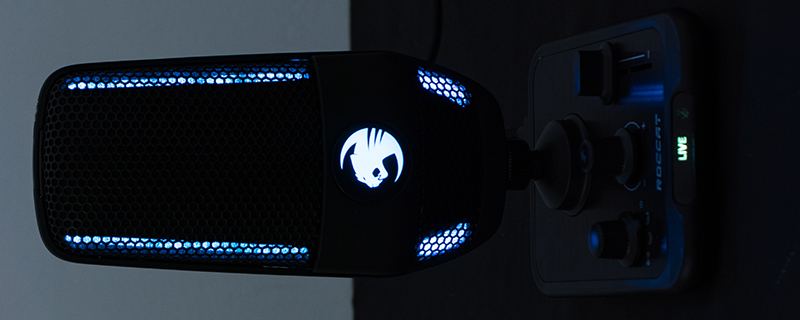Roccat Torch Microphone Review
Conclusion
Microphones are one of those devices that, without prior knowledge, you can easily not be used to where they sit in the market and so it’s not hard to look at the Torch and it’s £90 price tag and think it’s a whole hill of cash. Instead it’s extremely cheap. For example, a basic XLR setup such as a Focusrite Scarlet Solo and Rode NT1A microphone is going to run you around £400 without stand. A higher end model from Neumann is £2500 just for the microphone with a Universal Audio connection box around a grand.Â
All of which means that if you’re looking at the Torch as a fully-rounded solution to all your audio needs then it’s not that. But to be honest it’s not designed or priced for that either. It’s an entry-level model for people who want a microphone which is better than their headset one and lets them have a go at seeing if streaming is for them without breaking the bank to do it. The Elgato Wave 3 is nearly twice the price for example, and only the Rode NT-USB is the same price and roughly the same feature set. It’s about the only well known comparison model in this price bracket, and the Torch has a few extra features that might tip the scales in its direction. Just be aware that if you’re expecting to buy this and get audio of the same quality as your favourite streamer with their seriously expensive setup, there is a reason some things cost more than others.
Looks unquestionably favour the Torch over nearly any other option we can think of in the flash and flair department. The lighting is both excellent and useful. You can tell at a glance which pattern mode you’re in, the gain level you have, and whether you’re muted. In fact the only thing we’re not keen on is that you can’t use the Neon software to control the lighting but instead need to install the usual Roccat software package and pick the lighting from there, applying it to the Torch via the AIMO sync. Hardly user-friendly. Additionally if you disable the lighting, all the lighting gets disabled including the Live/Mute display on the front of the base. Speaking of the base it’s nice to have the controls to hand rather than on the microphone itself, helping eliminate some noise if you’re using them mid-stream. Similarly the microphone being able to be muted by waving across the top might help stop any bangs or clicks coming through. It’s worth bearing in mind that if you’re using the Torch in whisper/ASMR mode and being very close to it then your nose, more often than not, will count as a mute and there is no way to disable the function. Annoying.
The microphone is incredibly sensitive, so if you’re in an environment where you can’t shout, or even perhaps talk all night, then with a good level of gain all the patterns pick up well. The cardioid whisper mode in particular is sensitive enough to be able to pick up your voice from arms length when you’re whispering as quietly as possible. Perfect for those late night streams. With good positioning the built in pop-filter is better than one might expect too, although obviously not a patch on a genuine external one. If you put the Torch to the side of you then all your plosives won’t affect it and it’ll still pick up your voice clearly. The voice is slightly cold and sterile and could benefit from some warming and background noise reduction in your program of choice. With any cardioid pattern there is always going to be some background noise – cardioid refers to the heart shaped pickup pattern with the v of the heart at the capsule, thus some background sensitivity – and the Torch is sensitive enough on higher gains to pick up the rest of your room nearly as clearly as your voice. Certainly if you’ve a mechanical keyboard or are rather heavy handed on your desk then we’d invest in a boom arm.
For the money the Roccat Torch is an excellent entry level microphone, with good sensitivity, easy to use controls, software-less use and some flash and flair. It only works on PC or Mac, despite the Type-C connector so that’s one thing to be aware of. With a little bit of software adjustment to let you customise the lighting or perhaps warm the sound quality up and apply some noise reduction it could even be great. If you want to try your hand and streaming and want something much better than any headset microphone it’s affordable enough to give you a good indication as to whether it’s a direction in which you wish to head. Just know it’s a gateway drug to the world of vocal work and you’ll probably quickly be looking at some room deadening panels, and a boom arm, and perhaps an external pop filter, and some software tweaking.
Discuss the Roccat Torch on the OC3D Forums.




